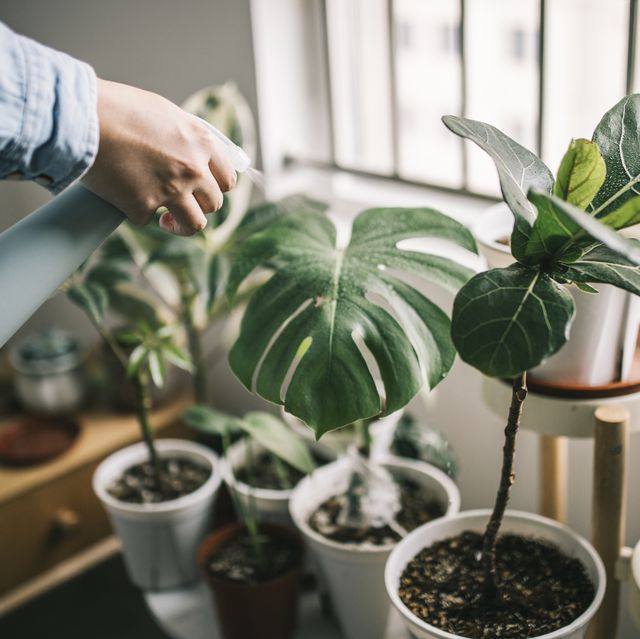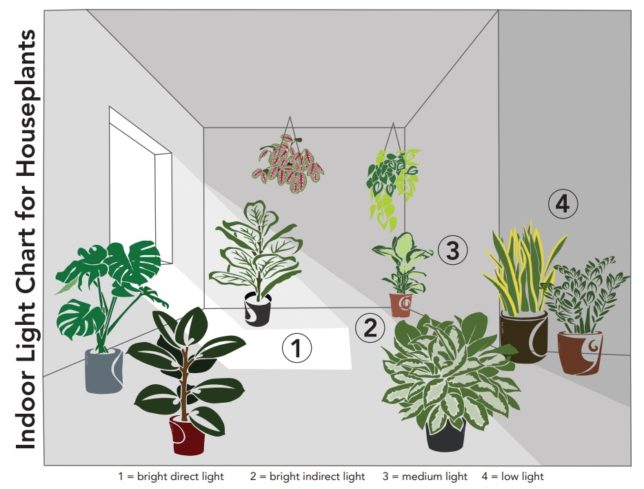Discover the most effective Low-Light Indoor Plants for Enhancing Your Home Décor
Integrating low-light indoor plants right into your home design can considerably boost both aesthetics and ambience, particularly in rooms that do not have bountiful all-natural light. Ranges such as the Serpent Plant and ZZ Plant not just bring life to dim corners however likewise add to boosted air top quality and total health. Recognizing the unique features and treatment needs of these plants can result in a more harmonious living environment. As we explore the leading selections and their creative applications, one might question exactly how these selections can change your area right into a thriving haven.

Why Pick Low-Light Plants
Why go with low-light plants in your interior rooms? The modern-day living setting frequently provides difficulties such as limited all-natural light, making it challenging for traditional houseplants to prosper. Low-light plants are specifically adjusted to make it through and prosper in these conditions, supplying a sensible remedy for people looking for to enhance their indoor areas without the added stress of maintaining a lot more light-demanding flora.
Along with their strength, low-light plants contribute considerably to the appearances of an area. Their diverse series of colors, sizes, and shapes enables one-of-a-kind indoor design chances, creating inviting and lively ambiences. In addition, indoor plants are understood for their air-purifying top qualities, enhancing indoor air high quality by releasing and filtering toxic substances oxygen, which can improve general wellness.
Low-light plants additionally need minimal maintenance, making them especially attracting busy people or those new to gardening. Their versatility enables placement in numerous atmospheres, from workplace areas to poorly lit edges of the home. By picking low-light plants, you can appreciate the advantages of plant without the constraints that usually come with traditional gardening, inevitably promoting a much healthier and more visually attractive indoor atmosphere.
Leading Low-Light Indoor Plants
For those looking for to enhance their interior areas with greenery that grows in low-light conditions, a number of plant choices attract attention for their resilience and visual appeal. The Serpent Plant (Sansevieria trifasciata) is a popular choice, understood for its upright, sword-like fallen leaves and capability to tolerate overlook. This durable plant can make it through in dimly lit locations while boosting indoor air top quality.
One more outstanding option is the Pothos (Epipremnum aureum), identified by its heart-shaped fallen leaves and tracking creeping plants. When positioned on racks or hanging baskets., Pothos is not just versatile to reduced light yet likewise uses a striking visual contrast.
The ZZ Plant (Zamioculcas zamiifolia) is just as outstanding, flaunting glossy, dark eco-friendly leaves that can brighten up any kind of corner. Its drought resistance makes it suitable for active property owners.
Care Tips for Low-Light Plants
How can you guarantee that your low-light indoor plants thrive despite limited sunlight? Initially, choose the suitable potting mix that provides good water drainage while maintaining moisture. A well-aerated soil, such as a mix of potting soil and perlite, can assist protect against root have a peek at this site rot.
Watering is important; low-light plants generally require less regular watering contrasted to their sun-loving counterparts. Always examine the leading inch of the dirt-- if it really feels dry, it's time to water. Be careful of overwatering, as this can result in fungal issues and origin degeneration.
Fertilizing low-light plants need to be done sparingly - Best low-light indoor plants. Use a balanced, water-soluble fertilizer during the expanding season, but decrease or remove fertilization in the dormant months
In addition, dirt can gather on fallen leaves, hindering photosynthesis. Carefully clean the leaves with a damp fabric to maintain them tidy.
Lastly, observe your plants very closely. Indications of distress, such as yellowing fallen leaves or leggy growth, can indicate that your plant requires adjustments in treatment (Best low-light indoor plants). By adhering to these care ideas, your low-light indoor plants can thrive, including charm and vitality to your home
Innovative Ways to Display Plants
Boosting the aesthetic charm of your interior space can be achieved by thoughtfully presenting your low-light plants in innovative ways. Consider making use of upright area to your advantage; wall-mounted racks can display routing plants like pothos or philodendron, adding lushness while saving flooring space. Use plant stands of differing elevations to create visual interest and deepness, drawing the eye upwards.
Hanging planters are another exceptional alternative, offering a dramatic result when suspended from the ceiling or hooks. Macramé hangers can introduce structure and bohemian flair, while modern-day ceramic hangers can match a minimalist aesthetic. For a more cutting-edge technique, repurpose special containers such as why not try these out classic teacups or glass containers, which can include individuality to your screen.
Grouping plants in clusters is additionally effective; use varying pot sizes and shades to develop a natural look. This technique not just improves visual influence however likewise supplies an all-natural environment feeling - Best low-light indoor plants. Last but not least, think about placing plants near light resources like lamps or home windows to enhance their growth and display their lively foliage, hence improving the overall setting of your indoor setting.
Advantages of Indoor Greenery
Various research studies have actually demonstrated that including indoor greenery right into your living room provides a multitude of benefits, improving both psychological and physical well-being. One of one of the most substantial advantages of interior plants is their capability to improve air top quality. Plants absorb co2 and launch oxygen, creating a much healthier environment while also filtering system out hazardous contaminants, thus promoting respiratory system health.
Furthermore, the existence of plant has been connected to lowered stress and anxiety levels. Research study indicates that connecting with plants can lower cortisol levels, which are connected with stress. This calming effect can bring about boosted mood and boosted performance, making indoor plants a suitable addition go to these guys to offices.
Additionally, indoor greenery can boost cognitive feature. Research studies suggest that atmospheres enriched with plants can bring about boosted emphasis, imagination, and general psychological clarity. The visual charm of interior plants additionally adds to a more inviting and enjoyable setting, favorably affecting social communications and general fulfillment within an area.
Final Thought

Integrating low-light indoor plants right into your home design can significantly improve both aesthetic appeals and environment, especially in areas that do not have abundant all-natural light. Selections such as the Serpent Plant and ZZ Plant not just bring life to lower edges however likewise add to improved air quality and general well-being. Interior plants are understood for their air-purifying qualities, improving indoor air top quality by releasing and filtering contaminants oxygen, which can boost total well-being.
For those seeking to enhance their indoor rooms with greenery that thrives in low-light conditions, several plant alternatives stand out for their strength and visual appeal. These resilient plants, such as the Serpent Plant and ZZ Plant, grow in dark problems and call for minimal maintenance, making them appropriate for different lifestyles.